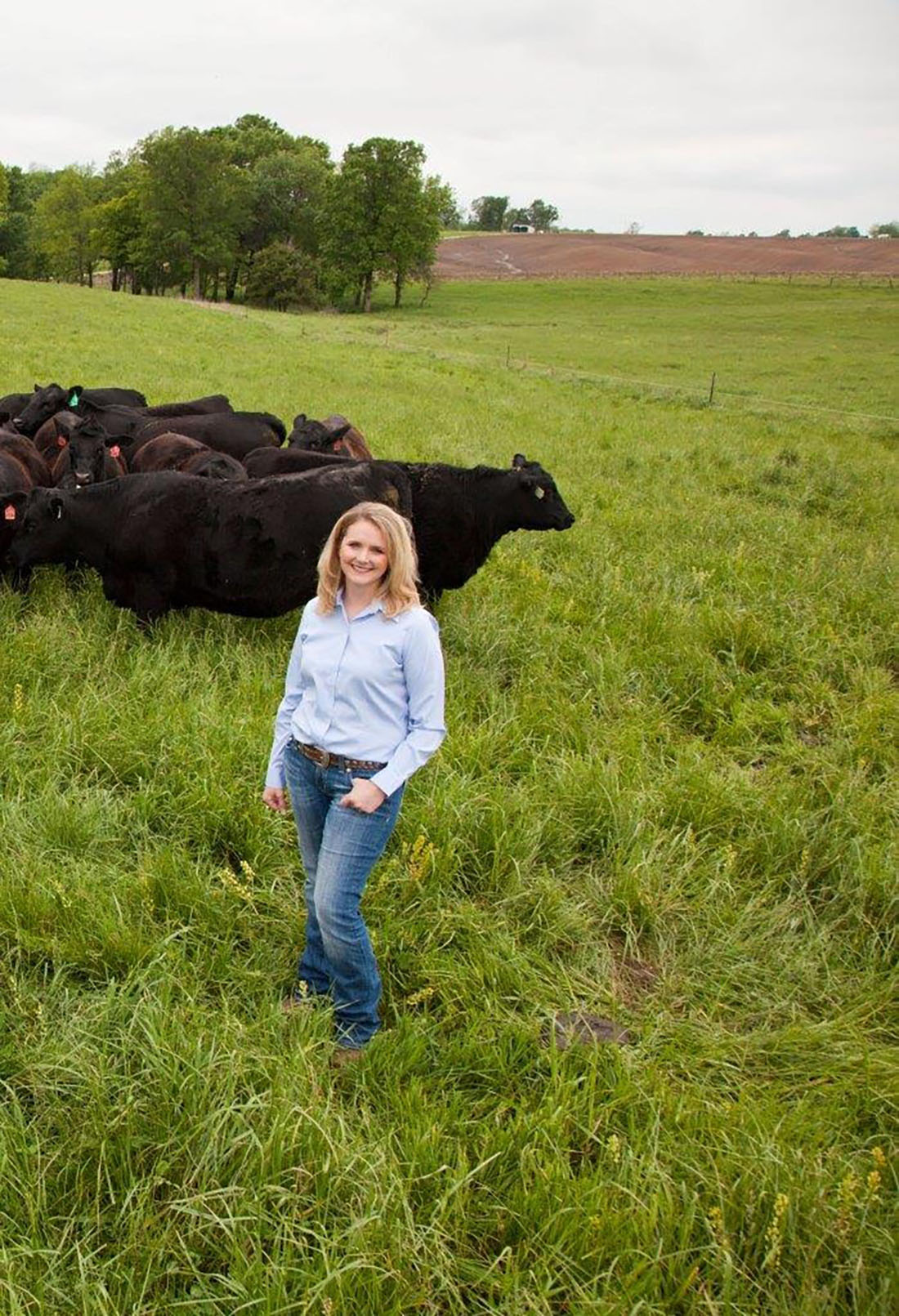WASHINGTON — It’s 5:30 a.m. when Chris Chinn’s alarm goes off. She pulls on her blue jeans, t-shirt and dark brown Ariat boots. On this particular day, she heads out to the feed mill to update the diet plan for her sows. By mid-afternoon, it’s time to bottle feed one of the calves. Her wardrobe is always the same, but there is no routine to her 7-day workweek.
“You might start out with a plan to go weaning, but you might walk into the barn and you find that the water line is broken,” said Chinn, a fifth generation hog farmer.
Chinn is just one of thousands of women farmers in Missouri, making up almost one-third of the state’s farming workforce.
A town of 786 people, Clarence, Missouri, is home to the Chinn family’s 320 acres of farmland, where Chris and husband Kevin raise, breed and care for 1,600 sows and 75 cows, and produce row crops like soybeans and corn.
A Missouri native, Chinn studied journalism at Truman State University in Kirksville, and jumped right into her husband’s family farming business when they married in 1995.
Work on the farm is endless. That’s why the Chinn’s two children, Rachelle, 17, and Conner, 14, help out when they’re not in school. As for Chris and Kevin’s hours, “We really don’t count them,” Chinn said.
With nearly 46,000 female farmers in Missouri in 2012, the women’s agricultural workforce grew 2.7 percent from 2002, according to the United States Department of Agriculture.
In neighboring Kansas, women accounted for 28 percent of the farm jobs in 2012, up from 24 percent in 2002.
“The perception is that it’s a male-dominated career, and it’s really not,” Chinn said, recalling the stares she gets when shopping for farming equipment parts.
Colleges across the Midwest have seen a significant spike in female interest in their agriculture programs in recent years.
Enrollment at the College of Agriculture, Food & Natural Resources at the University of Missouri in Columbia went up 143.6 percent among women between 2004 and 2014. Kansas State University in Manhattan saw a 91.4 percent hike in its College of Agriculture in the same period.
“The traditional role models are being broken,” said Kevin Moore, associate professor of agriculture and applied economics at the University of Missouri.
Moore says he’s seen consistent participation every spring from females in his “Returning to the Farm” course. In his classroom, students create business plans for existing and future farms and attend workshops with family members to improve business and communication back on the family farm.
And while some women hope to return to the family business with college degrees, many are finding successful careers stretching beyond traditional farming roles, said Don Boggs, associate dean at the School of Agriculture at Kansas State University.
In the past 20 years or so, Boggs says colleges have made efforts to attract more women to science and math-related curriculum that’s helpful in agricultural degree programs. The idea is to prepare students for positions in agriculture communications and economics, as well as research and sales.
According to 2014-2015 data aggregated by Iowa State University, recent graduates – women and men — from 17 universities in agriculture and related disciplines reported average starting salaries of $36,173 in communications/public relations, $50,206 in farm management, $58,625 in marketing/public relations, and $48,276 in sales.
Experts say recent trends in “farm to table” initiatives for restaurants and home kitchens are bringing more foodies to the agriculture field. “Small farms are being romanticized by the local foods movement,” said Kelly Smith, marketing and commodities director at the Missouri Farm Bureau Federation.
Smith said women also play vital roles in the marketing arena because they “don’t get as emotional over an acre of soybeans as the man does.” It’s common, he said, for farmers to get “wrapped up in what they’ve raised,” and women are able to look strictly at the facts when it’s time to sell.
Times may be changing for women in agriculture, but back at the Chinn farm, it is business as usual this fall. November brings breeding season, and having a woman’s hands ready to help is more important than ever.
“Sometimes we have that maternal instinct to reading the animal’s body signals,” Chinn said.
In the meantime, Chinn continues to roll with the punches and brush off comments like “’You’re the prettiest farmer I have ever seen.’”
“We can do any job that a man can do,” Chinn said with a laugh.


